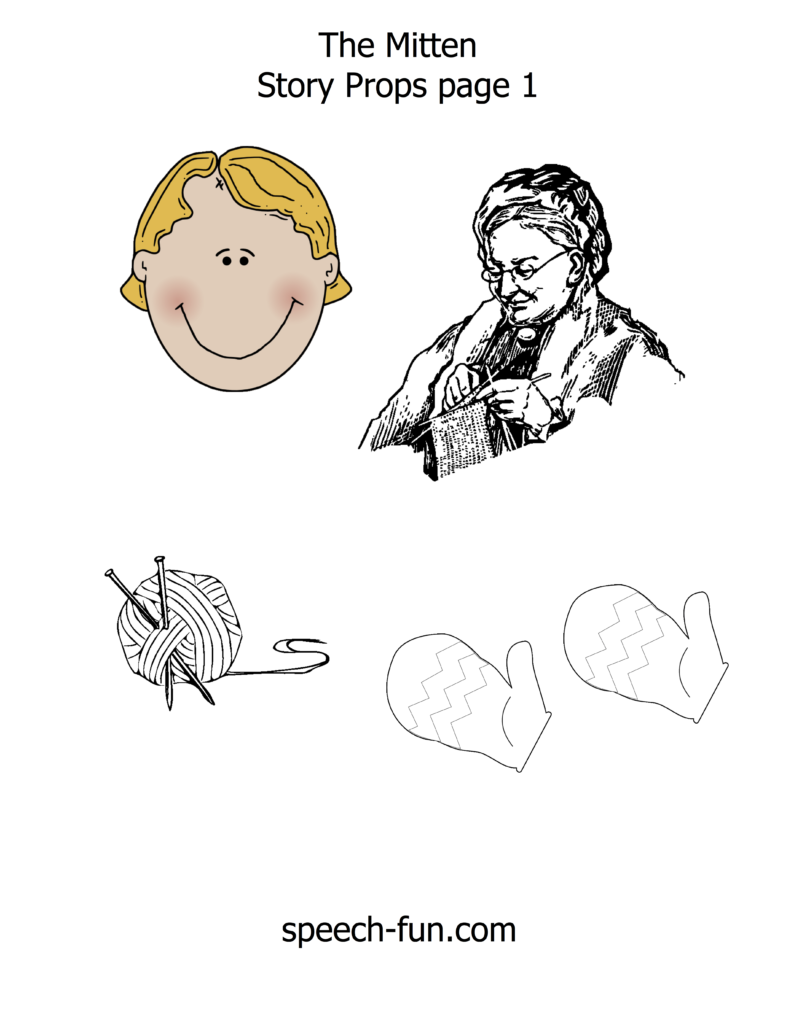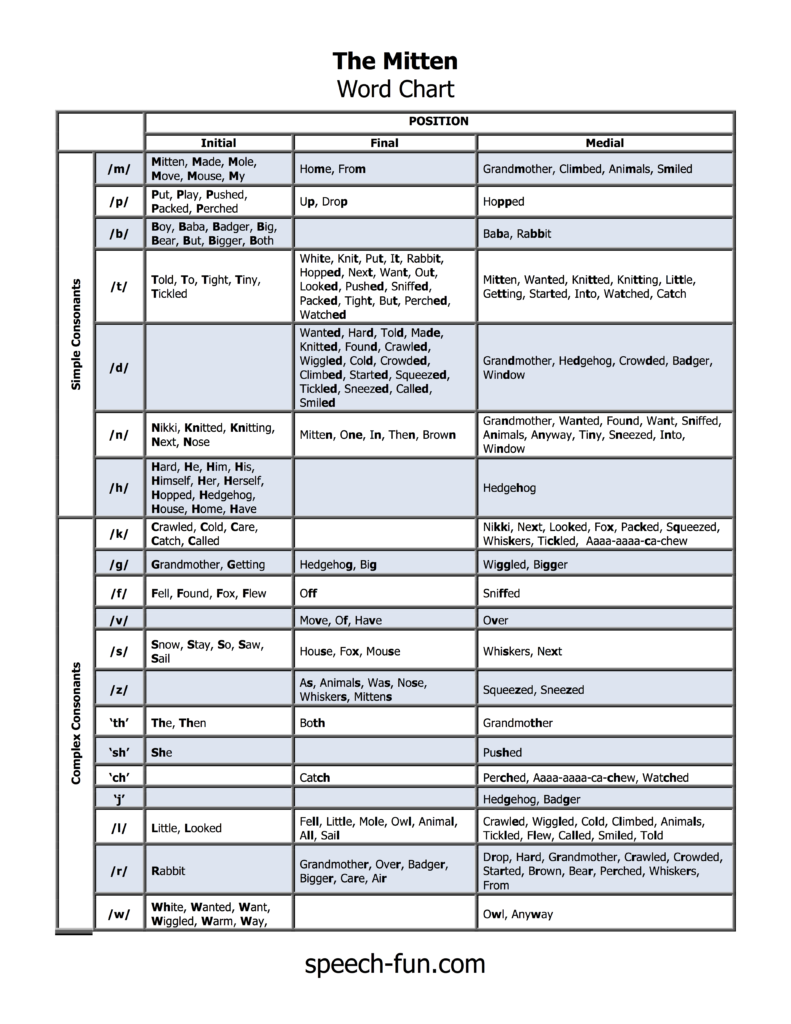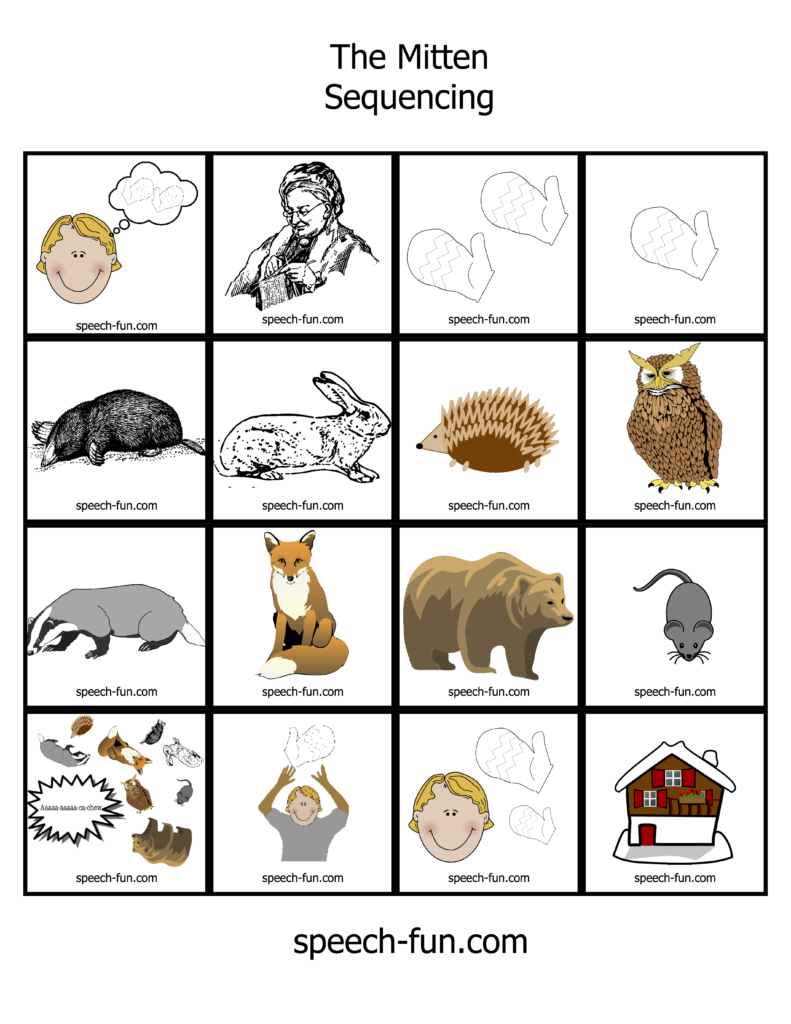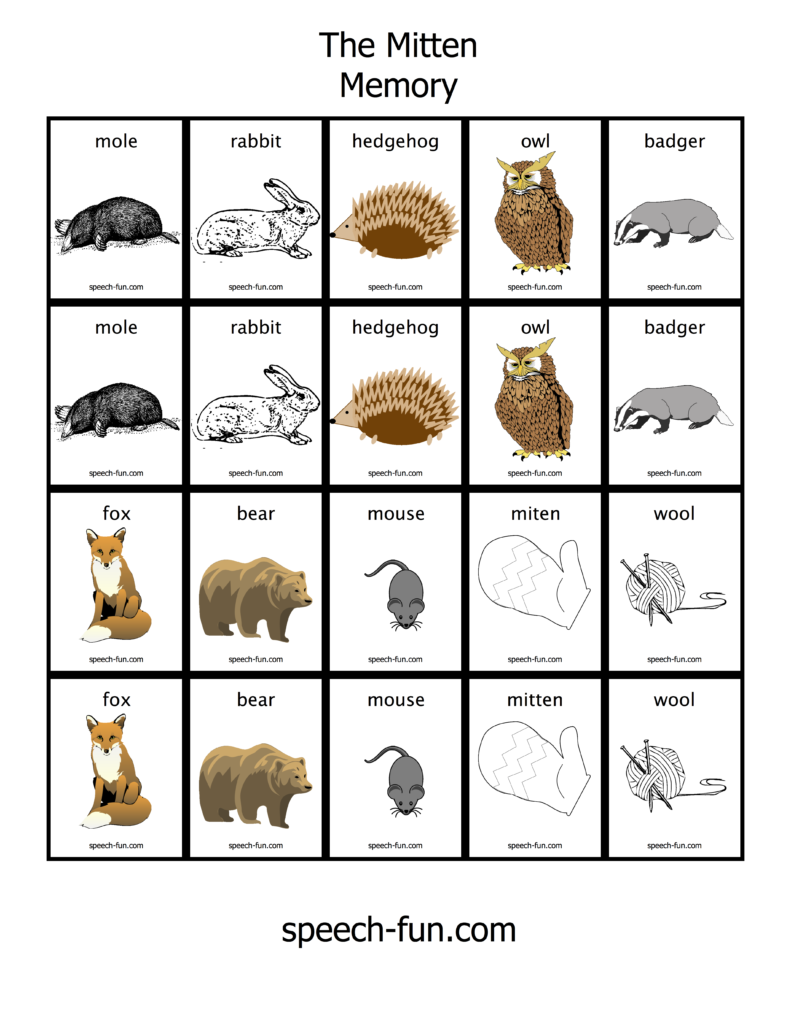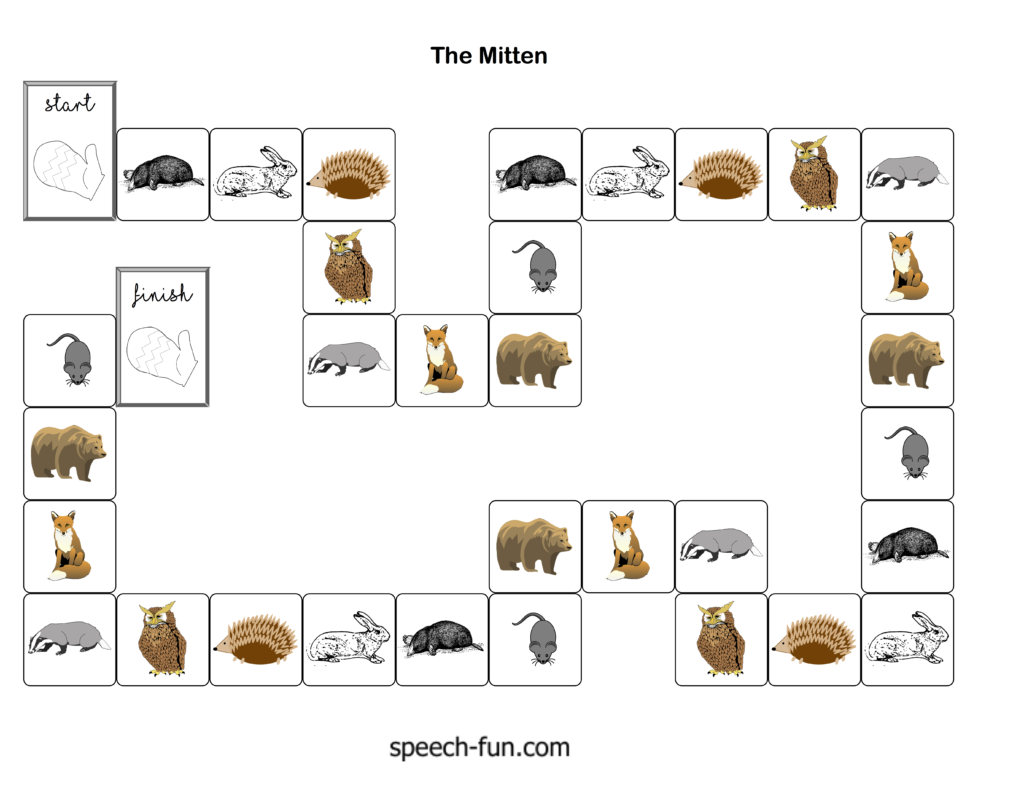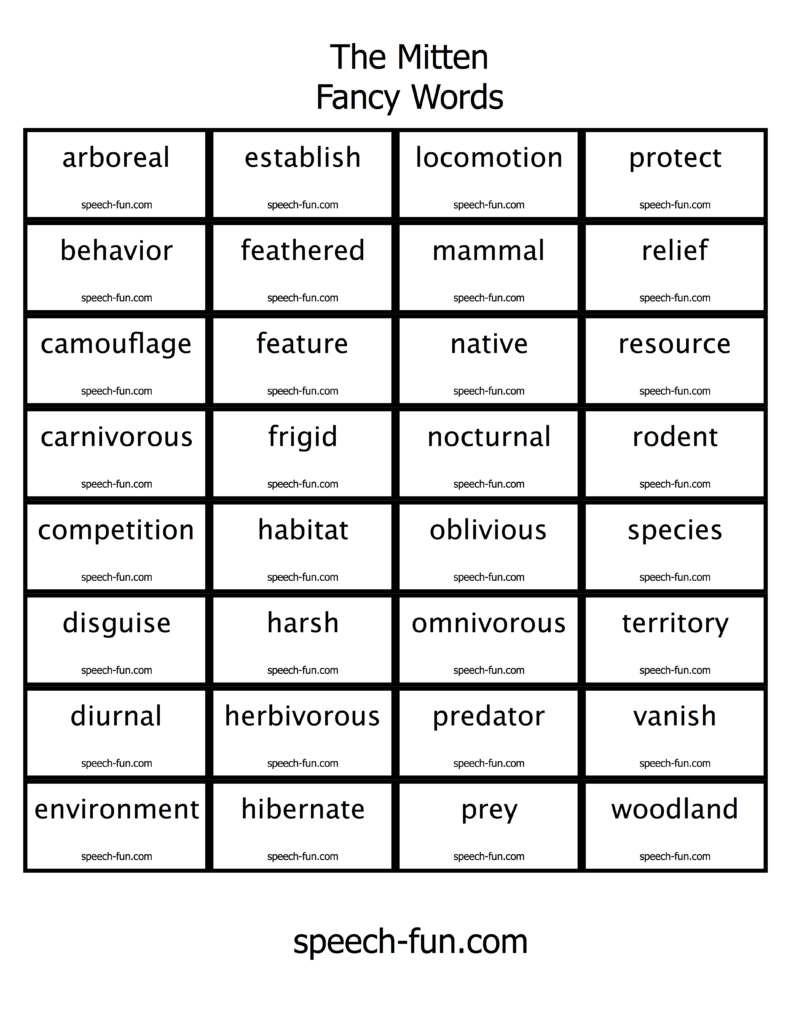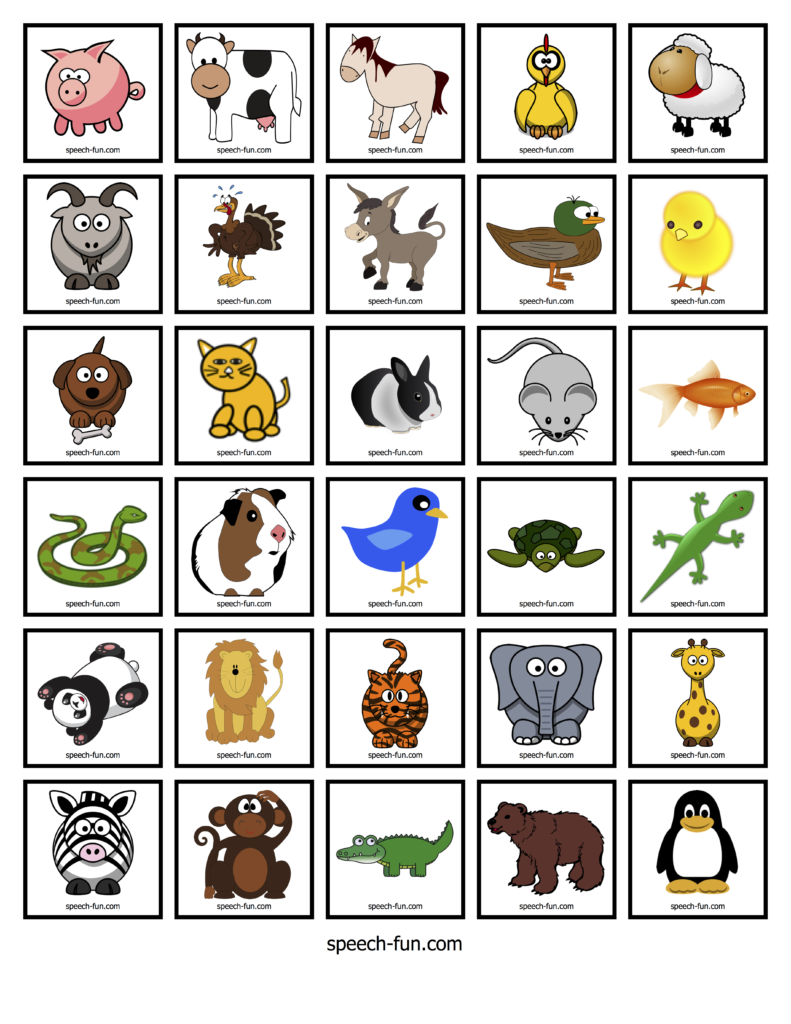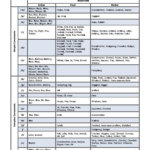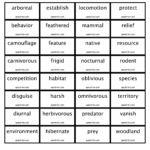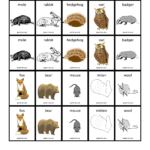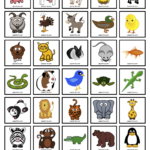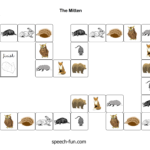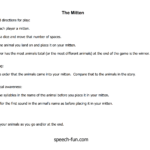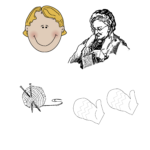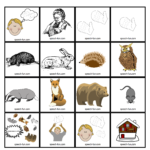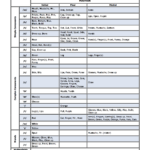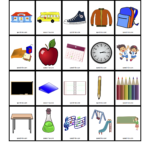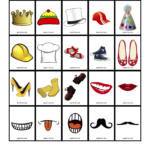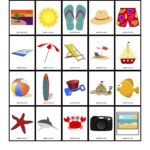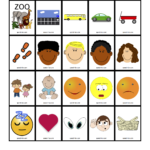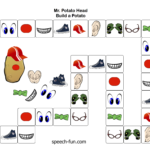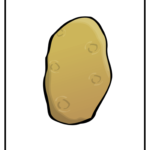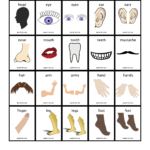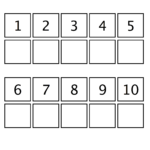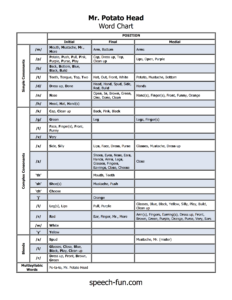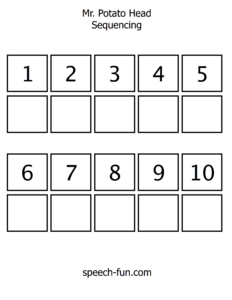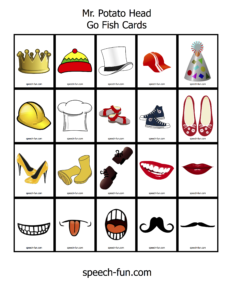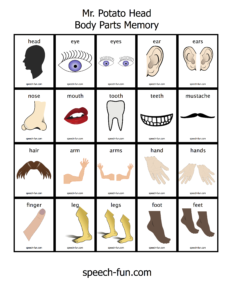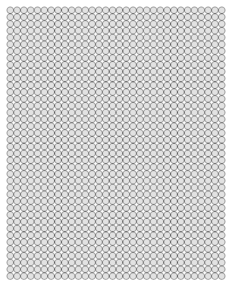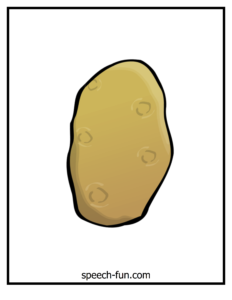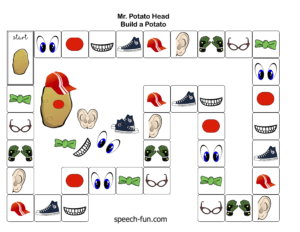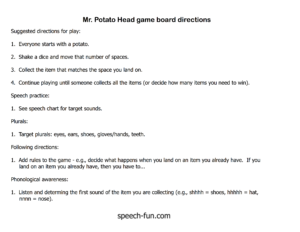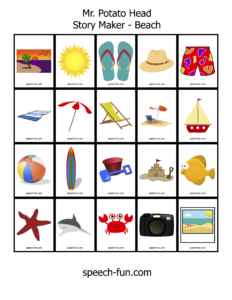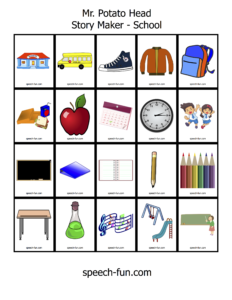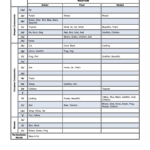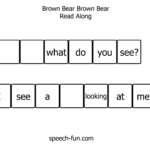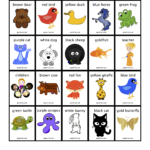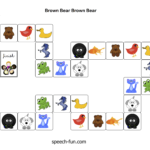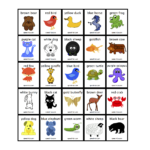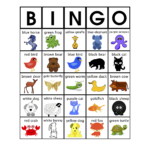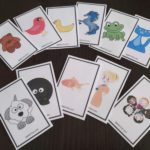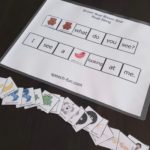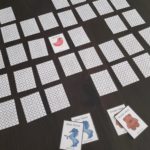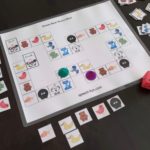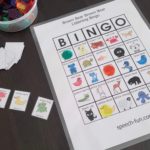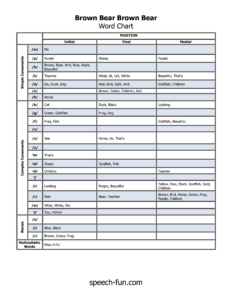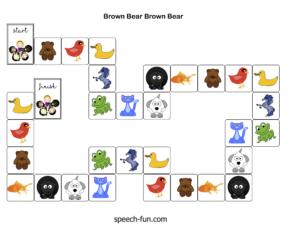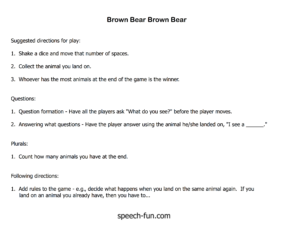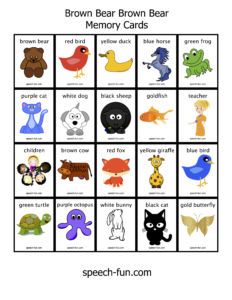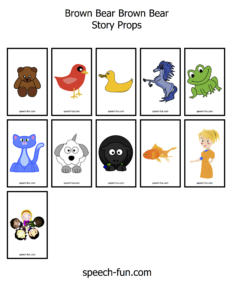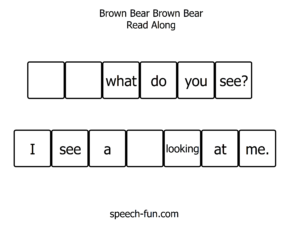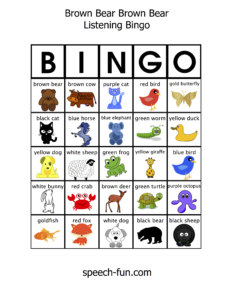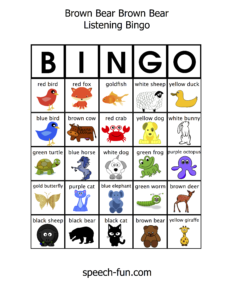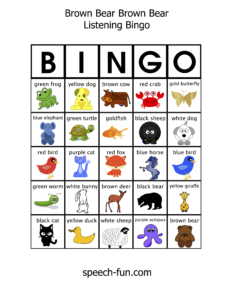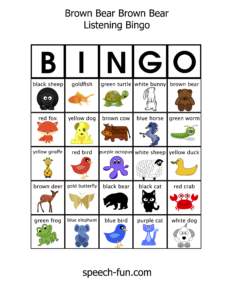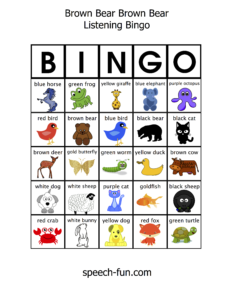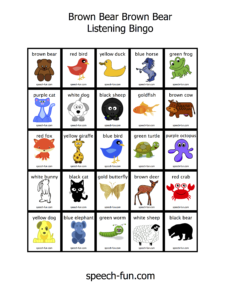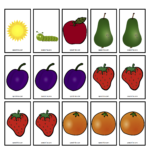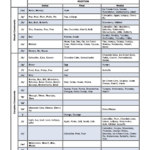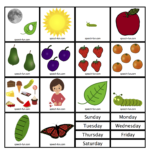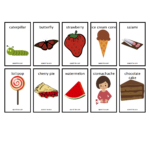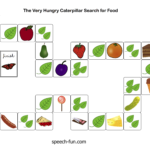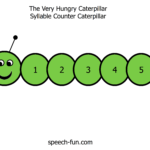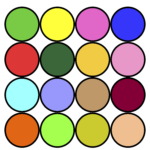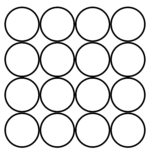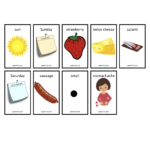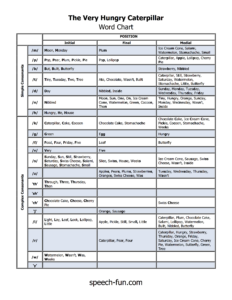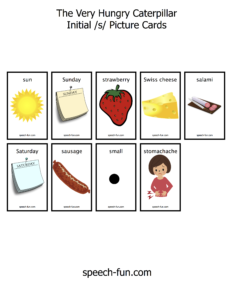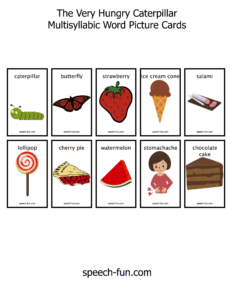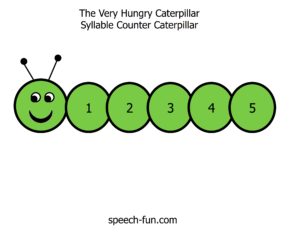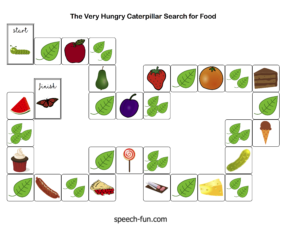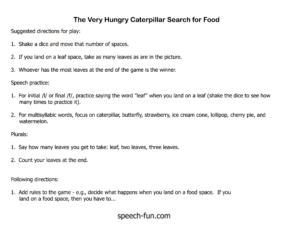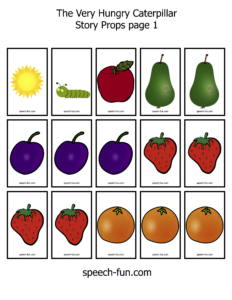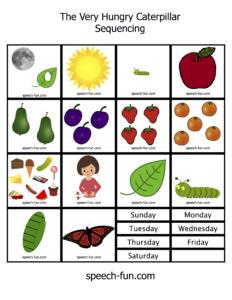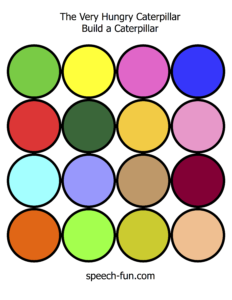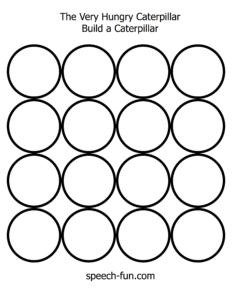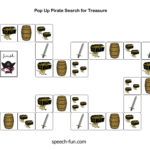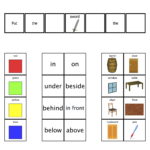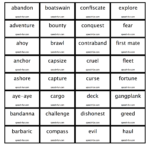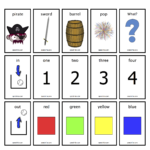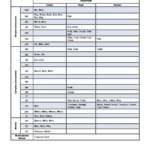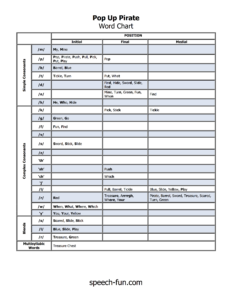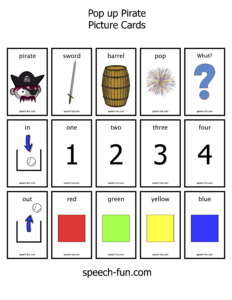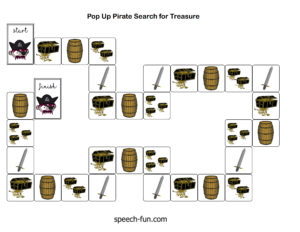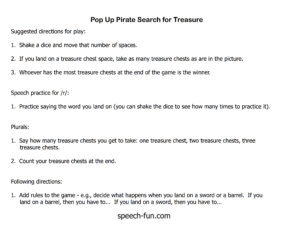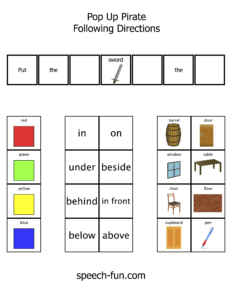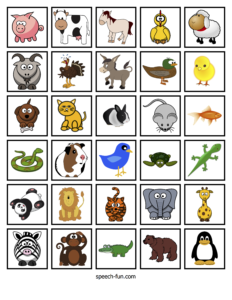Updated on December 31, 2021
Following Directions: Get Moving with a Build-a-Direction Activity
Are you looking for a fun way to get your students engaged in a following directions activity? An activity that targets tuning ears in, basic concepts, and even auditory memory? Try creating a Build-a-Direction activity!
Here’s how to do it…
You will need:
- a set of verbs (movements the students can do) written out
- e.g., run, walk, wiggle, penguin walk, walk sideways, crab walk, etc.
- a set of prepositions (includes direction concepts, spatial concepts) written out
- e.g., around, over, beside, under, in front of, between, etc.
- a set of nouns written out (I like to make these theme-based)
- e.g., duck, dog, horse, cow, sheep, pig, etc. (farm animals)
- a set of pictures matching the nouns – I like to make these large
Set up:
- Place the pictures around the room – usually I use the floor but you can also place them in other locations (based on the prepositions you’ve chosen).
Play:
- Pick a verb (e.g., run)
- Pick a preposition (e.g., around)
- Pick a noun (e.g., the strawberry)
- Get ready to listen (“stop and listen”)
- Read out the direction (e.g., “Run around the strawberry.”)
- Follow the direction (e.g., run around the strawberry)
- Check back – did you remember what to do? (e.g., Did you run around the strawberry?)
You can customize this activity for your students to practice specific targets. For example, if you want to work on the concepts in front and behind, just use those two prepositions. You can use a variety of verbs and nouns but limit the prepositions to the ones you want to focus on. You could set the pictures up so there is a clear “in front” and a clear “behind” (e.g., tape them to chairs).
My students love activities that get them moving! Here are some examples of Build-a-Directions games I’ve created:
Let me know if you try this activity!
Updated on December 31, 2021
Following Directions: Building Understanding of Basic Concepts
Sometimes my students have difficulty following directions because they are lacking understanding of basic concepts. It is hard to expect a student to follow a direction when they are lacking understanding of the building blocks of directions.
In school, directions are filled with basic concepts (sometimes just one or two but can directions can also contain multiple concepts). Types of concepts used in directions include:
- Spatial concepts – e.g., in front, behind, beside, above, bottom, between
- Quantity concepts – e.g., one, two, few, many
- Sequence concepts – e.g., first, last, second, then, next, before, after, when
- Shape, size, texture, color concepts – e.g., round, large, rough, blue
To teach basic concepts, I love using:
- Barrier games –
- Can use for all sorts of concepts
- Spatial concepts – tell where to place an item (beside, on top on, between, close to, in front of, etc.)
- Quantity concepts – use when telling how many items to place (e.g., two) or when telling where to place the item (e.g., “Put the dog under the table with 2 balls.”)
- Sequence concepts – give multi-step directions (e.g., First…Then…)
- Shape/size/texture/color/etc. – describe the item or where to put it
- Bingo games –
- Concepts bingo targeting specific concepts (spatial concepts, quantity concepts, etc.)
- Hiding games –
- Spatial concepts – describe where you are looking or where you find the item
- Shape/size/texture/color/etc. concepts – describe what you hide or find
- Scavenger hunts –
- Spatial concepts – describe where you are looking or where you find what you are looking for
- Shape/size/texture/color/etc. concepts – describe what you are looking for
- Toys –
- Shape/size/texture/color/etc. – describe using these concepts
- Comparing and contrasting activities –
- Shape/size/texture/color/etc. – compare and contrast two items using describing words
What are your favorite ways to teach basic concepts?
Updated on December 31, 2021
Following Directions: Auditory Memory Board Games
I love playing word memory board games to help my students learn strategies that can help them follow directions. When I play auditory memory board games with my students I get a chance to see how well they can remember words (super important when following directions!), if they have any strategies (e.g., do they repeat back the words before starting), and whether they can remember the words while doing a task (moving around a board).
If you haven’t played an auditory (word) memory board game before, this is what my version looks like. The board has a path with four different (usually theme-based) pictures repeated and a start space and a a finish space. Rather than moving around the board using a dice or spinner, a list of words (corresponding to the game board) is read (2-, 3-, or 4-words). Students can move around the board touching each of the pictures that was read (e.g., “dog – cat” –> move to the next dog space and then the next cat space).
I will often get students who struggle to follow directions in class to try to play an auditory memory board game with me. I usually start with two-word memory. If they can do that successfully, we move to three- and then four-word memory. If they can’t successfully do two-word memory, we either move down to one-word memory or work on strategies for two-word memory.
Some students haven’t had experience playing board games so we also work on organization (how to move around the board).
Some strategies we use to help build word memory skills:
- Stop and Listen – make sure your ears are tuned in before the words are read. If you didn’t listen in the first place, it is hard to know where to move to.
- Repetition – repeat back the words you hear. This allows you to hear the word more than once.
- Rehearsal – rehearse the words before starting. This helps keep brains focused on remembering the words.
- Think aloud – say the words as you go so your brain stays focused.
- Check back – listen to the words again, did you get where you were supposed to go? It’s easy to skip this part but so important to start building self-awareness and self-monitoring skills!
Have you tried Auditory Memory board games? What other ways do you work on auditory memory?
Updated on December 31, 2021
Following Directions: Tuning Ears in Using Music
Some of my students struggle to follow directions because they have difficulty tuning their ears in to listen.
Sometimes they tune their ears in part way through the direction, but miss the beginning. Sometimes they tune their ears in right away and catch the beginning, but then miss the end of the direction because they haven’t persisted in their listening. And sometimes they just don’t tune their ears in at all and miss everything.
One of my favorite ways to help students work on tuning their ears in and building persistence in listening is with music. I love using the song Willoughby Wallaby!
If you have never used Willoughby Wallaby, it’s a super fun and flexible rhyming song about an elephant that sits on anything or anyone.
Willoughby Wallaby wocket,
An elephant sat on a rocket.
Willoughby Wallaby webra,
An elephant sat of a zebra.
You pick your target thing (or person, place, etc.) and replace the first sound with a /w/ for the first line (e.g., TARGET: popsicle “Willoughby Wallaby wopsicle”) and then sing the second line, pausing for the student(s) to fill in the last word (e.g., “An elephant sat of (a)_________”).
If I’m working with a whole class or a group of students I’ll use this with students’ names to get everyone’s ears tuned in. Students can stand up, sit down, go to their desk, etc. when they hear their name rhyme:
Willoughby Wallaby Wasmine,
An elephant sat on <Jasmine>.
Willoughby Wallaby Welias,
An elephant sat on <Elias>.
Students that have a tricky time tuning ears in right away will be more successful if you leave them until later on (challenge them by choosing them earlier on), whereas students that have difficulty with persistence in listening will have more success if you pick them early (challenge them by leaving them until later).
This is an activity teachers can use as a warm up activity to make sure their students’ ears are listening before giving directions.
I also use this song with visuals to work on tuning ears in, with students in small group or individual therapy. I set out a number of pictures (animals, people, objects, etc.) and then sing Willoughby Wallaby using the pictures. Students listen and pick out the picture of the word that rhymes. To start with I will use multisyllabic words (ideally 3-4+ syllables) and I will only set out two pictures. The longer the word, the more time students have to tune their ears in to get information. When students are successful with 3-4+ syllable words I will start adding some two syllable words and then finally some single syllable words. Single syllable words require ears to be tuned in very quickly. I will also start adding more than two pictures at a time.
When students are successful with this Willoughby Wallaby activity using visuals, I will increase the challenge by removing the visuals. I will give a category (e.g., animal) or sub-category (e.g., farm animals). Just like when I use visuals, I will start with multisyllabic words to give more information then move to single syllable words to increase the challenge.
Building in a check-back opportunity allows students to build self-awareness and self-monitoring skills.
“Wow, you heard me rhyme your name! You must have been listening with your ears.”
“Oops, you didn’t stand up when I rhymed your name. Did you forget to turn your ears on and listen?”
“Hmm, listen again…do you think that ‘warrot’ and ‘pumpkin’ rhyme or ‘warrot’ and ‘carrot’ rhyme?
Do you use Willoughby Wallaby with your students? Do you have any other strategies for helping students tune their ears in?
Updated on December 31, 2021
Following Directions: Finding the Point of Breakdown
As a speech-language pathologist, I constantly come across kids who struggle with following directions. These students often struggle in the classroom, in extracurricular activities, and at home.
When I work with a student who has difficulty following directions, I like to explore the why in order to know how to best support the student. Here are some of the questions I like to consider:
- Do they have difficulty tuning their ears in? These students often completely miss directions because they haven’t tuned their ears in to listen.
- Do they tune their ears in part way through the direction? These students often miss the first part of the direction but will likely follow whatever was said last.
- Do they tune their ears in at the beginning but then tune out part way through the direction? These students might do the first step given but the rest of the direction because they have tuned their ears out and haven’t listened to the rest of the direction.
- Do they understand basic concepts (spatial concepts, sequencing concepts, quantity concepts, qualitative concepts, etc.)? These students might listen to the directions but don’t correctly follow because they don’t understand the basic concepts included in the direction.
- Can they remember the information? These students might listen to and hear the direction but don’t follow because they haven’t held on to/remembered the information.
- Can they remember the information but not in the right order? These students have listened to the direction and follow but don’t remember which order the steps go in.
- Do they start before hearing the whole direction? These students will likely do the first step but they get busy doing the task and forget to listen to the rest of the information.
- Do they remember to check back? These students might follow the direction but don’t self-monitor and check back to see if they have followed correctly.
Once I know the point (or points!) of breakdown, I can better find effective strategies.
I hope you enjoy this series on building foundations for following directions! Please let me know below if you have any favorite following directions activities.
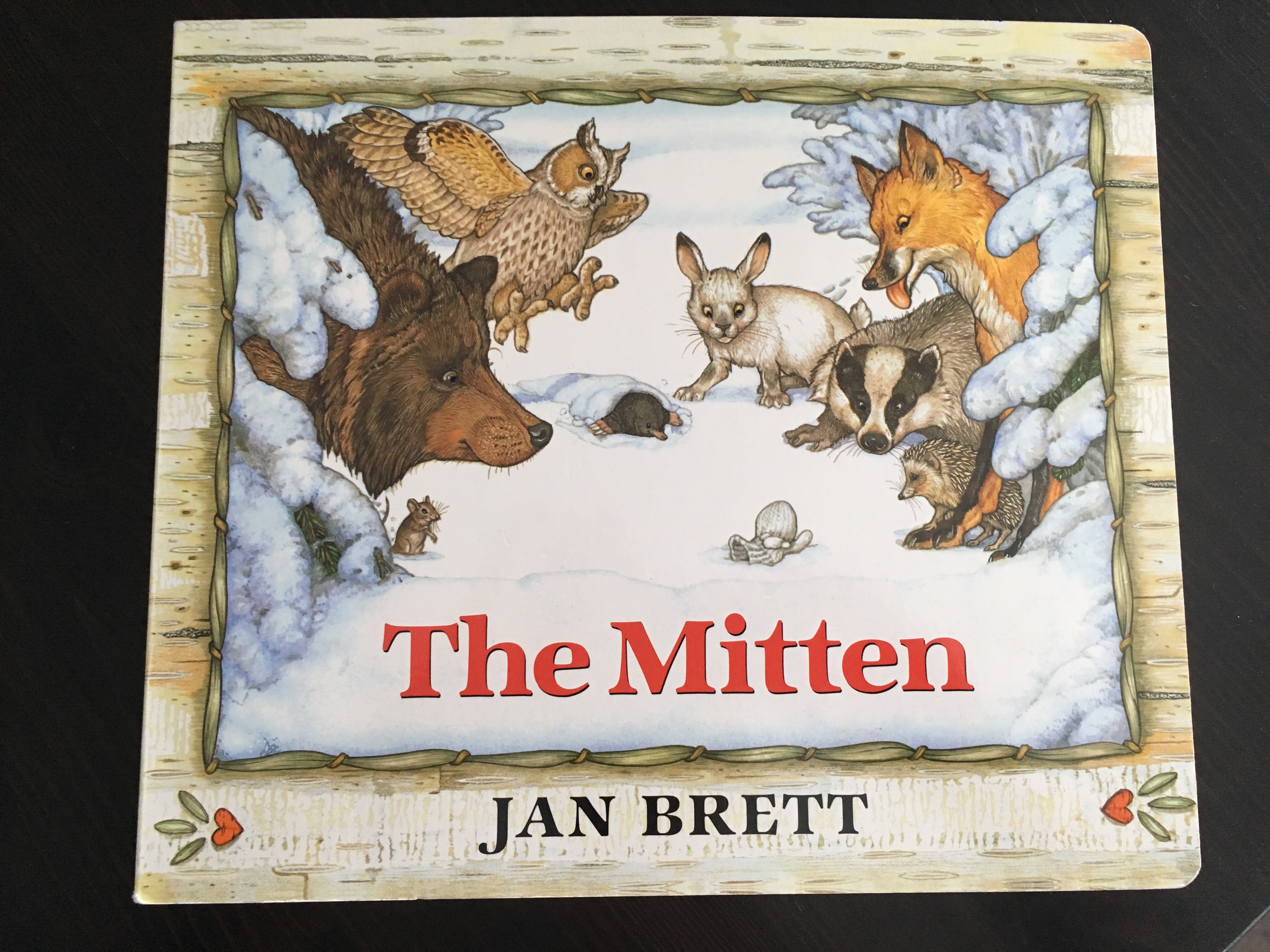
Updated on February 6, 2020
The Mitten
The Mitten by Jan Brett is a favourite of mine. I love adding visual supports to work on sequencing and retelling this story.
Speech Activities:
- You can find target words on The Mitten speech chart.
- Use The Mitten game board to target speech sounds. Roll the dice and practice your target word the number of times shown on the dice.
- Retelling using the sequencing cards or story props is a great way to work on carry over of sounds into conversation.
Language Activities:
Vocabulary:
- Concepts –
- sequencing concepts – use the story props and sequencing pictures to retell the story and focus on sequencing concepts (first, next, then, after, before, when, last, etc.)
- size concepts – big, bigger, biggest, small, smaller, smallest, tiny, tinier, tiniest
- Describing
- describe the animals from the story – what they look like/sound like/feel like, what they do, how they move, what size they are, where they live, etc.
- Comparing and contrasting
- Categories
- sort animals based on habitat
- Fancy Words
- introduce some fancy vocabulary. Turn this into a memory game by printing two copies of these and printing this on the back of each page.
Grammar:
- Plurals – count the animals as they go into the mitten. Count the animals you collect while playing The Mitten board game (directions).
- Pronouns – talk about Nikki using male pronouns (he, his, him, himself) and Baba using female pronouns (she, her, hers, herself).
- Prepositions – the animals go “in” the mitten, the mouse goes “on top” of the bear’s nose, the animals fly “out” when the bear sneezes, Nikki’s mitten flies “into” the air. Use the game board props to move animals beside, behind, on top, under, above, below, between, in, etc.
- Verbs – choose a verb tense to use as you retell the story (e.g., present tense, past tense using the story props or sequencing cards.
Early Literacy Activities:
- Inferencing – ask thought questions as you read the story. What do you think will happen when…? Do you think the bear will fit? I wonder if a badger could fit in your mitten… I wonder what Baba is thinking?
- Story telling –
- use the story props or sequencing cards to retell the story
- act out the story
- Phonological awareness –
- Rhyming – sing Willoughby Wallaby with the story prop visuals. Willoughby Wallaby wadger, an elephant sat on a…badger. Willoughby Wallaby wear, an elephant sat on a…bear.
- Sound identification –
- Play guess the animal using the story prop visuals. Hide one animal in the mitten and give the first sound as a hint. See who can figure out the missing animal!
- Using the game board activity, listen for the first sound in the animal’s name before placing it in your mitten.
- Segmenting – clap the syllables in the animal names (use these, these, or do this while playing the game. [game board directions])
Printables:
Speech Chart
Fancy Words
(print two of these for a memory game and print this on the back of each page)
Memory
Animal Sorting
Game Board and Instructions
Story Props
Sequencing
Where to buy:
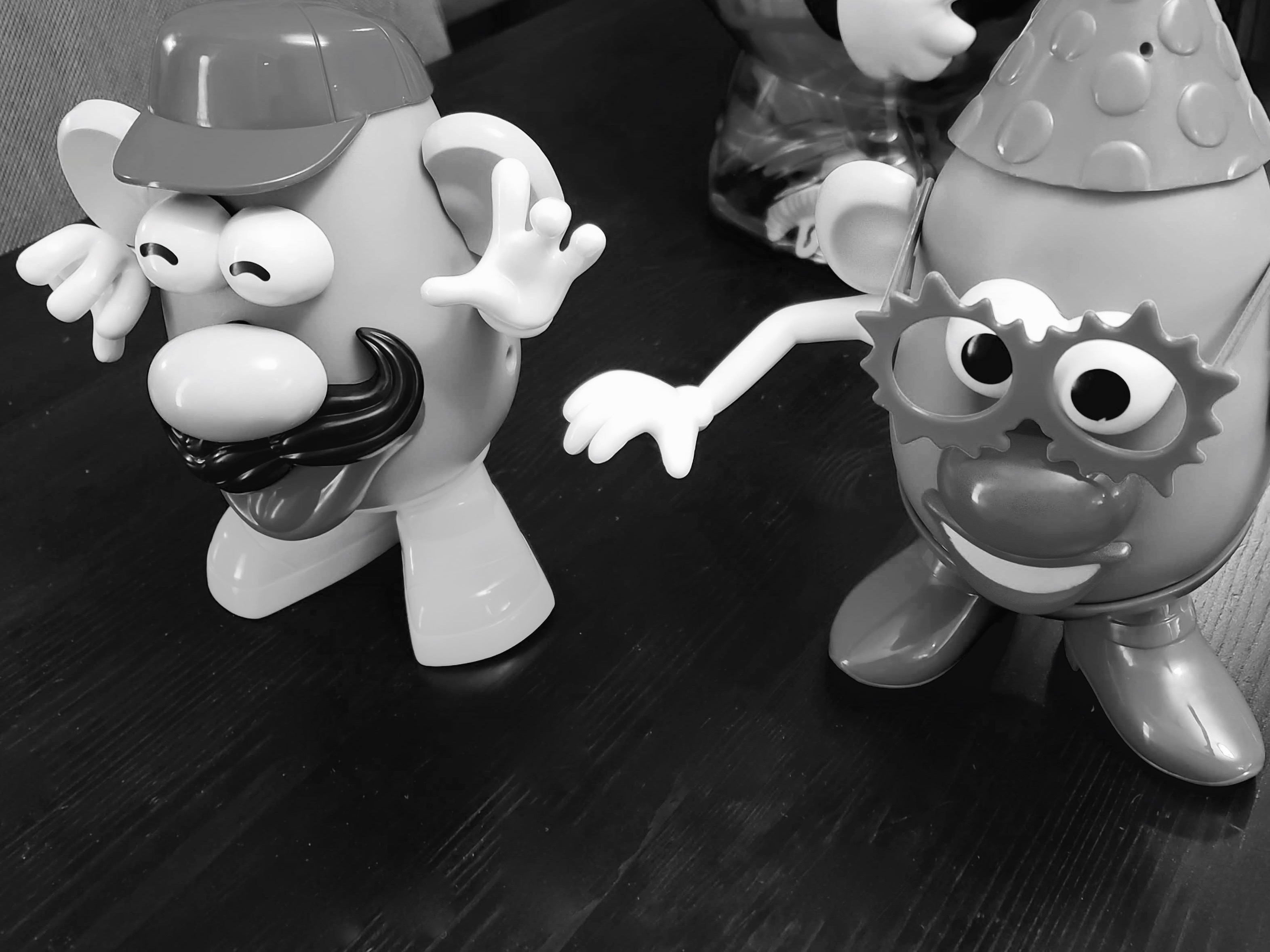
Updated on September 30, 2018
Mr. Potato Head
Mr. Potato Head is a classic toy that allows for easy speech, language, and literacy building!
Speech Activities:
Mr. Potato Head can be used as a tool to help your child build speech sounds.
- You can find target words on the Mr. Potato Head Speech Chart.
- While playing with Mr. Potato Head, have your your child think about their target sound.
Language Activities:
Vocabulary
- Basic vocabulary – this is an easy toy to use to target body parts. You can use the Mr. Potato Head go fish cards or Mr. Potato Head body part memory while working on these.
- Concepts
- Sequencing concepts can be used while building your potato head. You can use the Mr. Potato Head toy or this build a potato printable. Try using this Mr. Potato Head sequencing activity printable (horizontal and vertical presentations).
- Describing –
- Describe what we use body parts for (e.g., eyes for seeing, ears for listening, etc.)
- Using the build a potato printable as a barrier game encourages allows for practice with describing skills (see Following Directions below for more instructions) .
- Comparing and contrasting – talk about how the Mr. Potato Head body parts and clothing items (either using the toy or the build a potato printable) are similar and different.
- Categories –
- Sort items into body parts, clothes, colours, etc.
- Talk about what you would dress Mr. Potato Head like for different activities (e.g., if it was raining, it he was going to school, etc.).
- Use the Mr. Potato Head story maker printables while generating ideas about what Mr. Potato Head might find in each location (Beach, School, Zoo).
Grammar
- Plurals – playing with Mr. Potato Head provides many opportunities to target plurals using the clothing and body parts (eyes, ears, arms, hands, shoes, etc.). You can use the Mr. Potato Head game (directions) to practice plurals.
- Pronouns – there is lots of opportunity to practice pronouns while playing Mr. Potato Head (he, him, his for a Mr. Potato Head and she, her, hers for a Mrs. Potato Head).
- Prepositions –
- “in” – put pieces inside the potato, push them into the potato holes
- “out” – take the pieces out of the potato
- “on” – put the hat and shoes “on”
- “off” – take the pieces “off”
- Verbs – pretend playing with Mr. Potato Head allows for lots of verb practice
- Questions formation –
- try using the read along visuals to practice asking “What do you see?”
- try playing go fish using the go fish cards or memory cards to practice “do you…?” questions (print this on the back of the pages).
Following Directions
- Try playing this Mr. Potato Head game (directions).
- Turn the build a potato printable into a barrier game. *If you have two potato head toys you can turn the toy into a barrier game.
- Print two copies.
- Each player gets one copy of the potato and the body part/clothing items.
- Place a barrier between the players.
- Take turns placing an item on your potato and then giving a direction to the other player so they make their potato look the same.
- Once both players are ready, check back to make sure the potatoes look the same.
- Use the Mr. Potato Head sequencing activity to add visuals to following directions.
Early Literacy Activities:
- Phonological awareness –
- Rhyming –
- Try singing Willoughby Wallaby while building your potato. Willoughby Wallaby wose, an elephant sat on a…nose. Willoughby Wallaby wat, an elephant sat on a…hat.
- Sound identification – give a sound cue to tell which body part to add to the potato (e.g., “hhhh” = hat, “nnnn” = nose, “t-t-t” = teeth or tongue, etc.)
- Rhyming –
- Story telling –
Printables:
Word Chart
Sequencing Visuals
Go Fish Cards
Body Parts Memory
Print on the back of Go Fish and Memory Cards
Build a Potato Activity
Game Board
Game Directions
Story Maker – Beach
Story Maker – School
Story Maker – Zoo
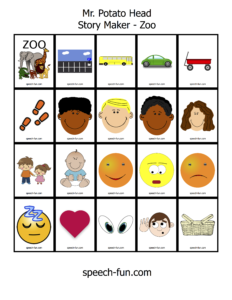
Where to buy:
amazon.com (Mr. Potato Head Silly Suitcase)
amazon.com (Mr. Potato Head Tater Tub Set)
amazon.com (basic Mr. Potato Head)
amazon.ca (Mr. Potato Head Silly Suitcase)
amazon.ca (basic Mr. Potato Head)
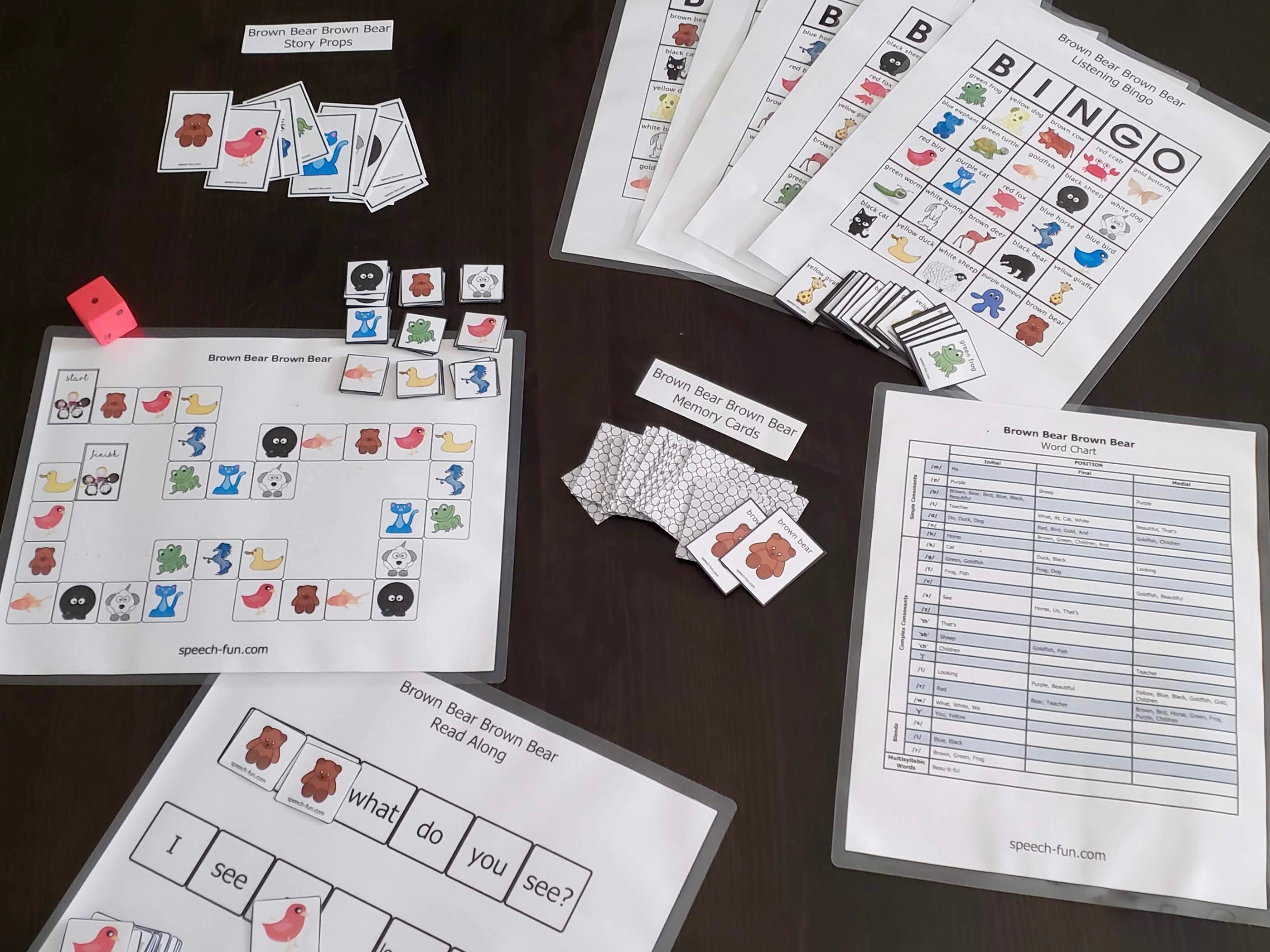
Updated on February 7, 2020
Brown Bear Brown Bear
Brown Bear Brown Bear by Bill Martin Jr. and Eric Carle is a fantastic speech/language/literacy tool. Like all Eric Carle books, I love the illustrations. I love the repetition that this story provides and the flexibility it allows in targeting speech, language, and early literacy goals. Kids love the repetition and how they can join in reading the story.
Speech Activities:
Because Brown Bear Brown Bear is a repetitive book, it is great for kids with motor planning challenges who need extra speech practice.
- You can find target words on the Brown Bear Speech Chart.
- While retelling the story have your child think about their target sound (you can use the story props as visuals).
Language Activities:
Vocabulary
- Concepts –
- Brown Bear Brown Bear easily targets colours
- use the story props to focus on using sequencing concepts (first, then, next, when, after, last, etc.).
- try making up your own Brown Bear story using other concepts (e.g., sizes, shapes, etc.). Little Mouse, Little Mouse what do you see? I see an enormous elephant looking at me… Scary snake, scary snake what do you see? I see a slow turtle looking at me…
- Describing – describe the animals in the story – talk about the colour, body parts, what they eat, how they move, etc..
- Comparing and contrasting – compare and contrast the animals in the story to real-life animals (e.g., the cat in the story is purple but a real cat would be…).
- Categories – try sorting the animals from the story props into categories (e.g., by body part, where they live, etc.). You could also sort the memory cards or the bingo calling cards.
- Fancy Words – grow your child’s vocabulary while describing the animals:
- camouflage
- carnivorous
- enclosure
- endangered
- habitat
- herbivorous
- mammal
- nocturnal
- omnivorous
- predator
- prey
Grammar
- Plurals – use this Brown Bear game board to collect animals. Count how many animals you have at the end. (Here are the directions.)
- Pronouns – lots of repetition of “you” (“What do you see?”) and “I” and “me” (“I see a…looking at me.”). This story uses “we” and “us” at the end of the story (“We see…looking at us, that’s what we see.”). You can use the read along visuals to practice “What do you see?” and “I see a…looking at me.”
- Prepositions – this story uses “at” (“looking at me”).
- Verbs – lots of repetition of “see”.
- Questions formation –
- try using the read along visuals to practice asking “What do you see?”
- try playing go fish to practice “do you…?” questions
Following Directions
- Play Simon Says using the story props (Simon Says put the brown bear in the cupboard. Simon Says put two animals under the chair.)
- Use the game board (here are the directions) to practice if…then directions
- To build listening skills, try playing listening bingo. These bingo boards encourage careful listening (e.g., black bear vs. brown bear, blue bird vs. red bird).
Early Literacy Activities:
- Phonological awareness –
- Rhyming –
- This book has rhyming built in – …what do you see? …looking at me.
- try using Willoughby Wallaby using the story props or bingo calling cards. Willoughby Wallaby wed wird, an elephant sat on a…red bird. Willoughby Wallaby woo worse, an elephant sat on a…blue horse.
- Sound identification – try hiding the animals (story props) and then give the first sound as a clue about which animal to find. Find an animal that starts with “b-b-b” (e.g., bear or bird). Find an animal that is the colour that starts with “rrrrrr” (e.g., red bird).
- Rhyming –
- Story telling –
- Because of the repetition, this story makes for an easier re-tell. You can either go back through the book or use the story props to retell (or both).
- Try making your own book, keeping the same format (____, ____ what do you see? I see…looking at me.) but use other people, animals, or even objects.
Printables:
Word Chart
Game Board and Directions
Memory or Go Fish cards (print two, print these bubbles on the back)
Story Props
Read Along
Card 1
Card 2
Card 3
Card 4
Card 5
Calling Cards
Where to buy:
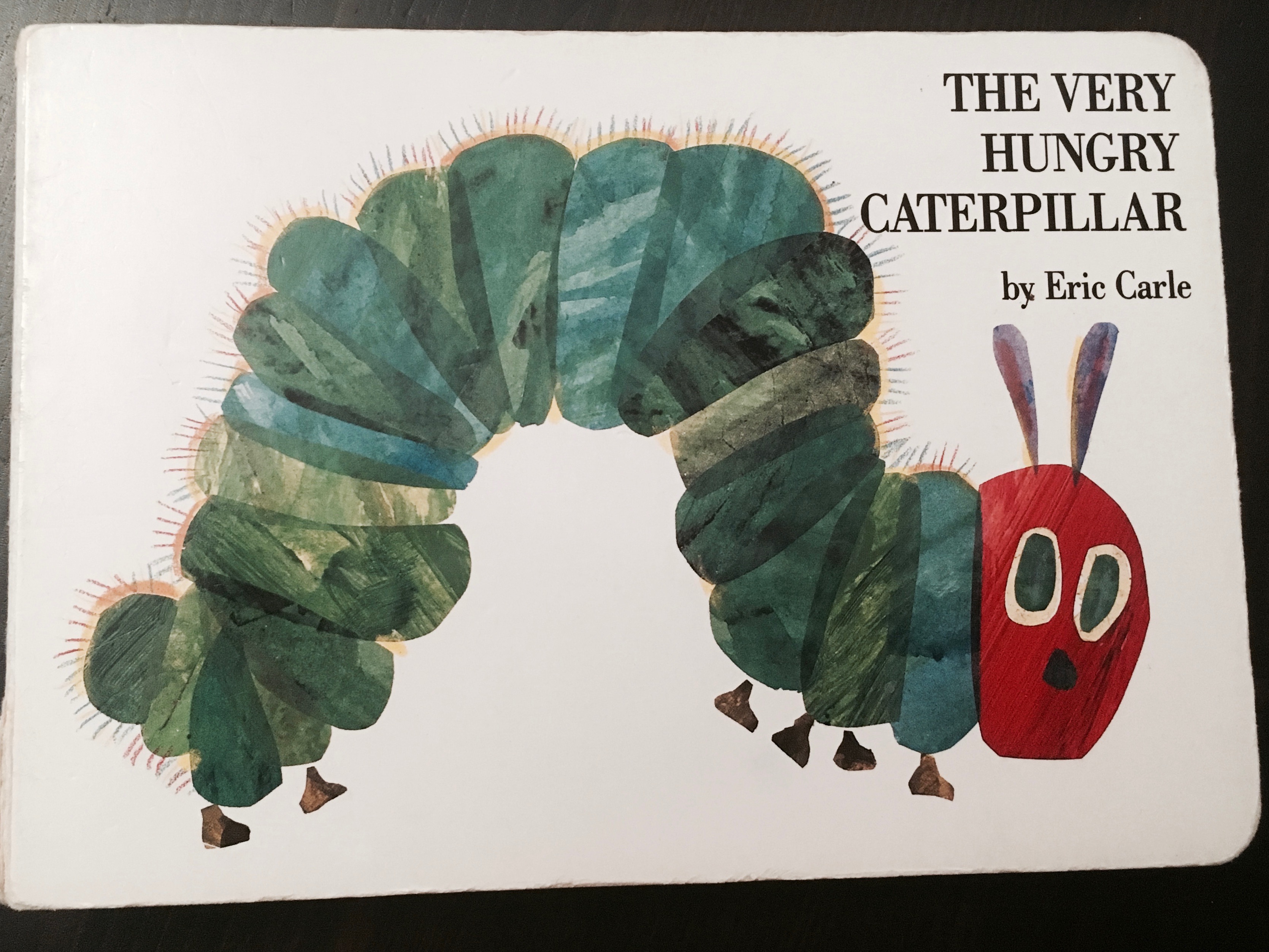
Updated on September 21, 2018
The Very Hungry Caterpillar
The Very Hungry Caterpillar by Eric Carle is one of my favourite preschool books. This story is popular with both kids and adults and is one of my go-to therapy tools. Besides the illustrations, I love using this story for sequencing and retelling activities! Kids love when I bring out story props and the activity becomes hands-on!
Speech Activities:
While The Very Hungry Caterpillar is a more obvious language and literacy tool, it has great potential for working on speech sounds or articulation.
- You can find target words on the The Very Hungry Caterpillar speech chart.
- Use the The Very Hungry Caterpillar game board to target /l/, /f/, and multisyllabic words (find the directions here).
- Use the multisyllabic words cards (if you print two copies you can play go fish or memory – print this on the back of each page) and the caterpillar syllable counter to work on multisyllabic words.
- Play go fish or memory with these initial /s/ cards (print two copies and print this on the back of each page).
- While sequencing or retelling the story (you can use the story props as visuals), have your child think about their target sound.
Language Activities:
Vocabulary
- Concepts –
- the story uses the following sequencing concepts: if, then, and when
- use the story props and sequencing pictures to retell the story, and focus on using sequencing concepts (first, then, next, when, after, last, etc.)
- Describing – the beautiful illustrations in this story provide many opportunities for describing.
- Comparing and contrasting – compare and contrast the food (use the story props as visuals). Talk about how two foods are the same and how they are different (e.g., strawberry and apple: both are red and fruit; strawberry is soft, apple is crunchy).
- Categories – try sorting the food from the story props into categories
- Fancy Words – grow your child’s vocabulary while using some of these related words:
- chrysalis
- wiggle
- metamorphosis
- larva
- hatch
- pupa
- emerge
Grammar
- Plurals – use this Very Hungry Caterpillar game board to collect 1 leaf, 2 leaves, or 3 leaves. (Here are the directions.)
- Pronouns – lots of repetition of “he” (referring to the caterpillar)
- Prepositions – this story uses “on”, “out”, “through” (lots of repetition of through when talking about the food he ate), and “inside”
- Verbs – The Very Hungry Caterpillar is a great story for past tense verbs. It uses many irregular past tense verbs (lay, came, ate, was, felt, built) and some regular past tense verbs (started, called, stayed).
- Conjunctions – The Very Hungry Caterpillar has a number of repetitions using the conjunction, “but”.
Following Directions
- Play Simon Says using the story props (Simon Says put the caterpillar under the table. Simon Says put two pears beside the chair.)
- Use the game board (here are the directions) to practice if…then directions
- Use the build a caterpillar activity to practice following directions (either the colour version or the black and white version). Draw a face on the green circle. Put/Glue the yellow circle beside the green circle. After you add the red circle, add the blue circle. Colour the first circle purple and the second circle yellow.
Early Literacy Activities:
- Phonological awareness –
- Rhyming – try using Willoughby Wallaby using the story prop visuals. Willoughby Wallaby waberry, an elephant sat on a…strawberry. Willoughby Wallaby wausage, an elephant sat on a…sausage.
- Sound identification – choose a sound to target (e.g., /k/) and emphasize this every time you hear a word starting with it while reading the story (e.g., c-c-caterpillar, c-c-came, c-c-cake, c-c-cream, c-c-cupcake, c-c-cocoon). To make the sound stand out even more, try adding a sound action (e.g., crash hands together for the /k/ sound).
- Story telling –
- Use the story props to help tell and retell the story.
- Try acting out the story.
Printables:
Game Board and Directions
Story Props
Sequencing Cards
Build a Caterpillar
Where to buy:
SaveSave
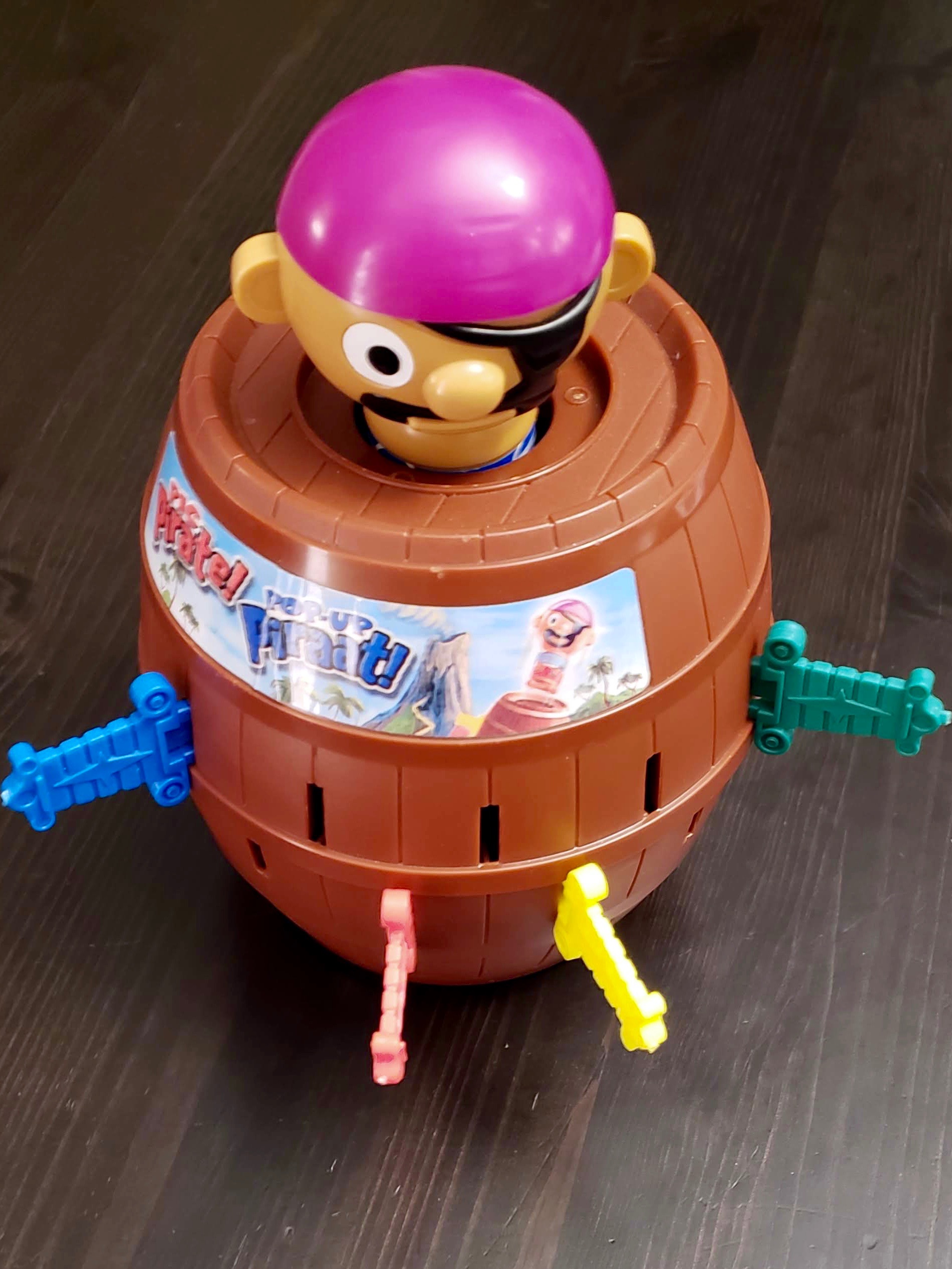
Updated on September 21, 2018
Pop Up Pirate
Pop Up Pirate has become a classic game in my collection. It is always a favourite! This game includes a barrel, pirate, and 24 swords. I love how simple this game is – it can be played quickly, used for speech practice, or expanded into language rich activities. I also love the durability. Kids love pushing the swords in and pulling them out when we finish. They love the excitement and anticipation waiting for the pirate to pop.
Speech Activities:
This is a great game for to pair with speech practice. You can have your child say a word a number of times and then put a sword in. . You can choose words from the speech chart or any other target words. If you’re working on /r/, Pop Up Pirate allows for lots of /r/ sounds (e.g., pirate, arrrrrgh, barrel, treasure, sword). Try the Search for Treasure game to practice /r/ (here are the directions).
Language Activities:
Vocabulary
- Basic vocabulary – colour words for the swords (red, yellow, green, blue)
- Describing – describe your feelings while you’re waiting for the pirate to pop. Are you excited? nervous? scared?
- Categories – try using these animal cards and figure out which animals pirates might see when they are at sea
- Comparing and contrasting –
- Fancy words – try introducing some fancy pirate vocabulary. To turn this into a memory game, print two copies and print this on the back of each page.
Grammar
- Question formation – yes/no questions (Can I have a ____ sword?), wh-questions (What colour would you like? Where is the ____? When do you think the pirate will pop?)
- Plurals – one sword, two swords. Try using the Search for Treasure game to practice plurals (here are the directions).
- Pronouns – this game is great for practicing male pronouns (pirate). He is in the barrel. He has an eye patch. His beard is black. I think he is going to pop!
- Prepositions – Try playing a hiding game with the swords – describe where you find them (in the cupboard, under the table, behind the door, etc.)
Following Directions
- Try using if…the directions. If you have shoes on, pick a red sword. If you have a brother, pick a yellow sword, etc.
- Follow directions using the swords from the game – you can use the pictures cards or this following directions visual.
- The Search for Treasure game can be used for work on following directions (here are the directions).
Early Literacy Activities:
- Phonological awareness – I like to use this game when introducing initial sound identification. I give the first sound of the colour and the kids get to take that colour sword (e.g., “rrrrr” = red, “y-y-y-y” = yellow, “b-b-b-b” = blue, “g-g-g-g” = green. I like to pair an action with each of the sounds as a multi sensory approach. Cover your eye like a pirate patch for “rrrrr”, pretend to use a yoyo for “y-y-y-y”, pretend to bounce a ball for “b-b-b-b”, and pretend to drink water for “g-g-g-g” (glug-glug).
- Storytelling – create a story about the pirate. See if you can incorporate some fancy pirate words.
Printables:
Picture Cards
Following Directions Activity
Fancy Words
(print two of these for a memory game and print this on the back of each page) 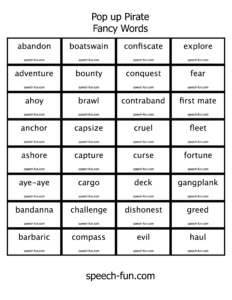
Where to buy:
